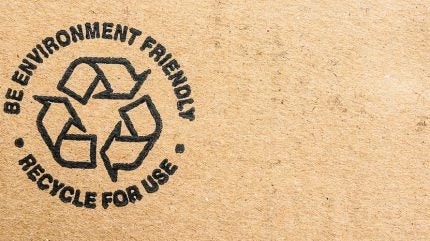
On 21 May 2025, the European Commission unveiled its latest Single Market Strategy, targeting the 10 most significant obstacles to cross-border trade and investment within the EU.
Among these, fragmented packaging and labelling rules emerged as a key barrier, contributing to rising compliance costs, supply chain inefficiencies and inconsistent consumer information across Member States.

Discover B2B Marketing That Performs
Combine business intelligence and editorial excellence to reach engaged professionals across 36 leading media platforms.
Fragmented packaging and labelling rules hinder cross-border trade
Diverging national rules on packaging, labelling and waste are creating major challenges for companies operating within the European Union.
According to the Commission, manufacturers often need to relabel or even repackage products to meet varying national standards. This adds complexity to logistics and increases costs, especially for small and medium-sized enterprises (SMEs).
The new Packaging and Packaging Waste Regulation aims to establish harmonised labelling requirements, including standardised consumer sorting labels. These will be implemented through upcoming legislative acts.
The Commission is also preparing to review the existing Textile Labelling Regulation, with plans to streamline current practices and introduce both physical and digital labelling formats to support environmental transparency and facilitate market access.

US Tariffs are shifting - will you react or anticipate?
Don’t let policy changes catch you off guard. Stay proactive with real-time data and expert analysis.
By GlobalDataDigital product passport to support circular economy goals
As part of its wider digitalisation efforts, the Commission will roll out the Digital Product Passport (DPP), which will act as a digital repository for product-related information.
By incorporating digital labelling, such as QR codes, the DPP is expected to ease compliance for businesses and improve information access for consumers. However, essential safety details will continue to be printed directly on packaging.
The DPP will initially apply to sectors covered by existing EU regulations, such as construction products, before being extended to other industries.
This approach is expected to promote sustainability and improve tracking of products across their life cycle, supporting the EU’s broader goals under the Circular Economy Action Plan.
Reform of extended producer responsibility and waste status criteria
The Commission also identified fragmented Extended Producer Responsibility (EPR) schemes as a major hindrance to the functioning of the Single Market. EPR requires producers to fund the disposal and recycling of their products.
However, the absence of uniform rules has led to a patchwork of national schemes with separate registration, reporting and payment obligations. A company selling electrical goods in three large Member States, for instance, may face up to 16 different EPR-related registrations.
To address these burdens, the Commission will propose legislation by the end of 2025 to reduce redundant authorised representative requirements and harmonise reporting obligations across the EU.
Plans also include the creation of a digital one-stop shop for EPR-related information and compliance tasks.
Furthermore, the Commission will seek to harmonise criteria for determining when waste can be reclassified as a product or by-product. The current lack of EU-wide definitions restricts the circulation of secondary raw materials and impedes recycling efforts.
Proposed changes under the forthcoming Circular Economy Act, expected in late 2026, aim to facilitate cross-border waste shipments and increase the availability of recyclable materials within the internal market.
By tackling these regulatory discrepancies, the Commission hopes to unlock the full potential of the Single Market, strengthen environmental policy alignment and improve competitiveness for EU-based businesses.





